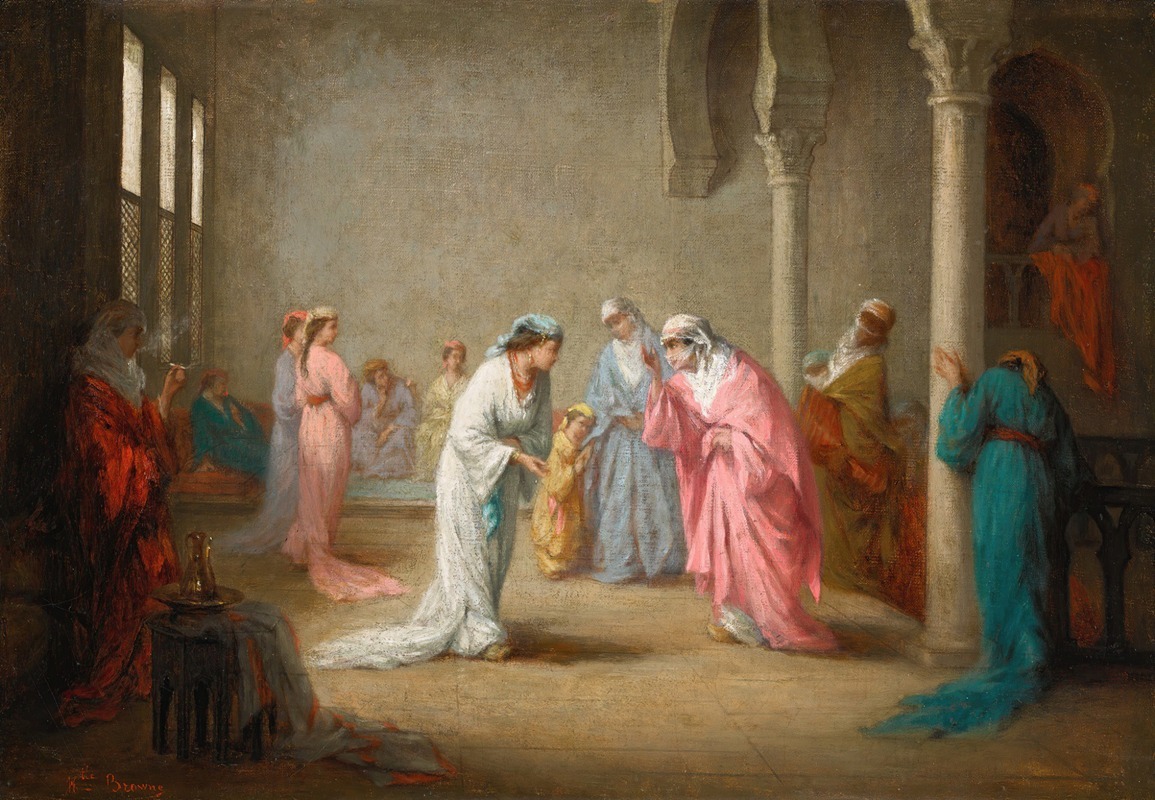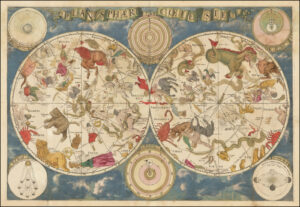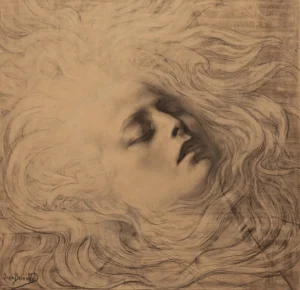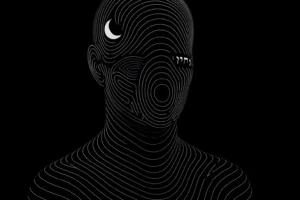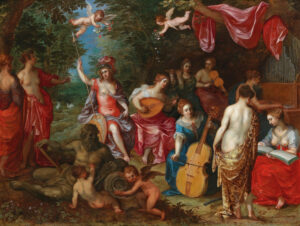It is a tenet as ancient as the Delphic threshold: the Mystery rarely announces itself in the forms most revered by the priesthood of culture. Though centuries have been spent weaving a veil of sacredness around the artefacts of high art and the treatises of the philosophers, the voice that tears this veil often chooses a vessel least suspected, most ordinary, or even scandal ostensibly profane. The world’s self-appointed guardians of wisdom, draped in their erudition, are often blind to the signs that erupt in the gutters, at the crossroads, or in the chords of a pop song broadcast over a shopping centre’s loudspeakers. If the Rose is to bloom, it often chooses the broken stone, not the gilded niche.
In the history of mysticism, there resounds a persistent warning: “Do not despise the humble; do not overlook the stranger.” The Talmud insists that every beggar may be Elijah in disguise; the Gospels whisper that the rejected cornerstone is, in truth, the axis of the temple. But, even now, in the postmodern dusk, a brittle arrogance still seeks the divine exclusively in the pages of the most revered texts, or behind the lacquered frames of museum walls, dismissing the living currents that run in the veins of the world’s overlooked children: those maimed in flesh or fate, those singing out of key, those whose beauty is scorned by the canon. The Mystery, irrepressible, will find its emissary among them.
I. The Lame and the Blind – Monuments of Revelation
Across the memory of every great city, there are monuments that do not merely commemorate the victorious, but instead enshrine the wounded, the outcast, the visibly marked by suffering. Paris, that restless crucible of revolutions and reason, constructed not only its arches to glory but the golden dome of Les Invalides, a temple to the “invalids,” those whom war and fate have fractured. This edifice, with its gilt dome gleaming against the Parisian sky, stands as a perennial sign that society, for all its pretensions to strength, is compelled to remember the ones it would rather hide. Yet the function of such monuments is subtler, more subversive, than official narratives will allow.
Les Invalides, the Cenotaph of Whitehall, the sculptures honouring lepers at the gates of Jerusalem, or even the battered stones of forgotten medieval shrines: these are not simply acts of national contrition or nostalgia. Rather, they are echoes of a much older intuition, one found in the apocryphal teachings of the Zohar and in the secret commentaries of Isaac Luria. There, in the mystic substratum, the wound is never only a deficit; it is the breach through which the divine pulse seeps into matter. They taught that the shattered vessels of creation retain shards of primordial light within their brokenness, so that the deepest radiance is always secreted within the flaw.
The city’s landscape, littered with these silent guardians of memory, becomes an open-air scripture for those who know how to read. The Invalides are not only a tribute to the maimed of history, but an altar to the Mystery’s penchant for the disguised. One finds, on close examination, that nearly every culture raises a monument not only to power, but to those disfigured by fate, monuments to the blind, the lost, the “untouchables.” In the cathedrals of Chartres or Toledo, side chapels are given to the leprous saints, the limping martyrs, the nameless orphans who saw visions in alleys rather than in palaces. In Jewish lore, the legend of the Lamed Vav Tzadikim persists: thirty-six hidden righteous souls, unknown to themselves and the world, whose suffering and anonymity sustain the world’s very being. To seek out the centre is to pass by these veiled presences, as one passes unnoticed by the statues that the city itself tries to forget.
This architecture of remembrance whispers that the Divine delights in contradiction: that which is rejected, cracked, or scarred is the very medium chosen for the transmission of the most vital Word. The stone ignored by passersby becomes the threshold; the monument blackened by rain bears a living oracle for those who will pause, look, and listen.
Chapter II: The Scorned Medium – Pop Music as Oracular Conduit
And yet, how often does the modern initiate fall into the trap of expecting the Mystery only among the marbled dead, or the sanctified icons? In truth, the principle of the veiled message is alive not only in stone, but in the very texture of what is most familiar, sometimes what is most despised. The pop song on the radio, the refrain that echoes in a crowded tube station, may conceal the spark more deftly than any rare manuscript. It is precisely this tendency, the Divine to clothe Itself in the unremarkable, to adopt the garment of the profane, that sets the stage for those cultural phenomena so often scorned: the so-called “commercial,” the “banal,” the “overheard.” Before the song, the stone; before the melody, the memorial; before the revelation, always, the wound. The Rose, by Her secret law, chooses to bloom most fiercely in the fissures that others overlook.

It is a recurring habit among the high priests of taste to dismiss bands like Tears For Fears as mere pop curiosities, an echo of the eighties best left to nostalgia nights and supermarket playlists. Yet the irreverence of the experts does not diminish the resonance that awaits a true listener. What the critic deems disposable may, for the one who listens with the inner ear, serve as an unexpected oracle. “The Working Hour” is a case in point: a song all but overlooked by the canon, yet heavy with the pulse of sacrifice and the metallic tang of spiritual labour. Here meaning is not worn as a crown but smuggled in beneath the everyday, encoded in the very melody that most would pass by without a thought.
The same charge has been levelled at bands like Coldplay, so often ridiculed, and yet, in a track such as “Clocks,” something essential slips through. A song played to exhaustion, a tune many would call banal, but let the refrain linger, let the chord progression haunt the dusk, and it is possible to discern the glimmer of a key, the hint of an opening where repetition becomes ritual, where the ordinary bends towards the luminous. The Mystery, as always, refuses to be contained by the seriousness of the expert or the gravity of the prophet. There are messages on billboards, lessons in cartoons, glimpses of the sacred in lyrics that appear, on the surface, to be anything but profound.
Hermes himself, the original trickster, is patron of these subversive transmissions: he wears the mask of the clown, he hides wisdom in the punchline, he delivers the sign in the form of a half-forgotten jingle or a poster glimpsed from the corner of the eye. The true signal is rarely announced with trumpets; more often, it laughs from behind the absurd, the underestimated, the commercial. The Rose has many disguises, and the vigilant soul learns to welcome the messenger in whatever garb She chooses. Even, or especially, when She appears in the garish costume of the everyday, or in the very melody most critics would rather not hear.
III: The Disguised Guide – The Messenger in the Crowd
The risk for any seeker is always this: to mistake the trappings of significance for significance itself. The world is crowded with messengers, but they come in forms most are trained not to notice. A homeless man mumbling beneath a railway bridge, a cleaner humming as she polishes the floor of a museum, a minor chord that triggers tears in an otherwise banal pop hit: these are the subtle punctuations by which the Mystery interrupts the script of daily life. The high priest or philosopher is not immune to error; indeed, they are often those who, besotted by their own torches, cannot see the lantern held by the shadow-dweller.

Every tradition carries tales of the divine incognito. The Gnostic gospel speaks of Sophia wandering the world in rags, awaiting recognition. In Celtic lore, the goddess appears as an old washerwoman by the ford, testing the discernment of passing knights. The Sufis, heirs to the wisdom of paradox, teach that every stranger may be Khidr, the green saint who whispers guidance at the crossing of the ways. The hermetic axiom holds: as above, so below, but it is always the below that must be entered, not in contempt but in radical openness.
The band, the song, the “low” medium: these are simply the present-day mask for the age-old game. To receive the message, the heart must be unarmoured, the mind unburdened by snobbery. The Mystery, after all, is not interested in reinforcing hierarchies of taste; its pleasure is in overturning them. The hidden key may be found in the melody that floats above the city’s noise, in the lyric that lingers in the memory long after its context has dissolved. To the oracular ear, there is no such thing as background music.
Conclusion: The Rose Blooms in Broken Stone
The lesson of the Mystery is neither resignation nor aesthetic relativism, but the practice of vigilance to the ways in which the symbol erupts where it is least expected. The Rose, whose scent is the seal of the divine presence, does not spurn the garden gone wild, the pavement cracked by years of neglect, nor the record sleeve relegated to a thrift store bin. The Mystery, older than the pyramids and younger than tomorrow’s dawn, chooses its vessel not by pedigree, but by ripeness and readiness. The wise, if they are wise at all, know to listen everywhere, and especially where the world urges them to disregard.
It is tempting, always, to believe that the Word is hidden in the rarefied, the abstract, the select. But the more ancient truth is this: the Logos becomes flesh, and flesh appears where the world’s gaze turns away. In “The Working Hour,” the echo of this truth resounds for those with ears to hear. It is not the prestige of the band nor the sophistication of the arrangement that matters, but the urgency, the wound, the longing compressed in the refrain. The secret, the real secret, is that there are no small things for the Mystery; only small perceptions.
Let the guardians of taste keep their treasures. Let the city raise its monuments to those who suffered, limped, fell, or sang out of turn. The Rose will find a way. The altar is always here, disguised, awaiting recognition. In the melody that accompanies the morning’s labour, in the statue passed by without a glance, in the band mocked by the fashionable, the seal of the Mystery is waiting to be broken.
